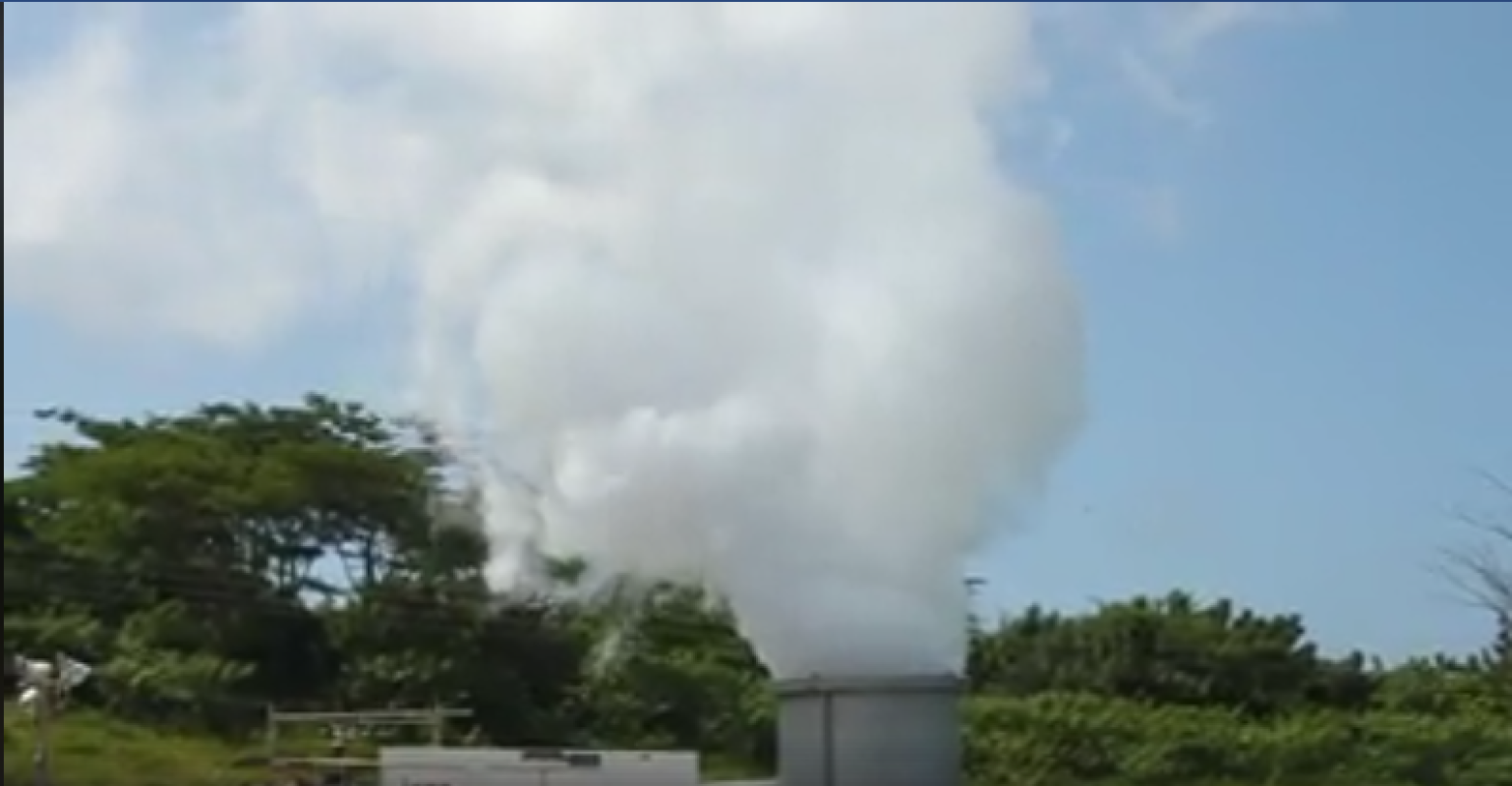It was five years ago today when members of the media were rushed to Cork Hill for what was a remarkable and encouraging sign. Steam gushed from the first geothermal well which had been dug as part of the island’s plan to power its future on green energy. But what has become of that plan five years on?
The Government of Montserrat (GoM), through the Ministry of Communications, Works and Labour (MCWL) and UK-DFID
have already undertaken several phases of the Montserrat Geothermal Project Development Phases; including Preliminary Survey, Exploration, Test/Production Drilling and Well – Testing (Mon 1 & 2). It was expected that well-testing of Mon3 was to be completed this year. However, this seems unlikely at the current pace of events.
In January, the DFID Infrastructural Advisor said a new contract with IDC would be done in a matter of weeks, now at the end of August there is still no agreement. We recently published an article stating that DFID was again renegotiating with the Iceland Drilling Company (IDC) to complete the digging of a third well. Over the years, different experts have said a third well is necessary, while others have said it is not.
According to representatives of Thermal Energy Partners, which is one of the companies that back in January submitted Early Market Engagement proposals to design, engineer and build a 2.5 to 3.5MW geothermal plant, a third well is a waste of time. Although, early tests have said Wells Mon1 and Mon2 can produce about 3MW which is what the island currently needs, TEP says new technology can pull a much greater resource which can produce enough power for the island’s future needs and more importantly, generate foreign exchange IF Montserrat were to expand it’s goal of doing more than lowering electricity prices for residents. TEP called Montserrat’s geothermal potential a “gold mine.”
The current Minister of Communications & Works Paul Lewis said he is ready to move on the project without the third well completed. He is adamant that he will pursue the public private partnership option, as DFID has stated they would not be investing in distribution of geothermal energy. His position differs from the leader of government and Minister of Finance Premier Donaldson Romeo, who has said he wants DFID to fund the project and keep private companies away from the national resource.
The differences of opinion could further delay any geothermal moves, as the premier could shut down any arrangements reached on a PPP through the Ministry of Communications and Works.
Another important concern is what is to be done with the energy produced and how will it ultimately benefit Montserrat?
According to the 2017 Growth Strategy produced by Mott McDonald, Montserrat’s population is growing 0at 1.1% annually. This means, there will be no dramatic increase for energy expected in the near or distant future as it relates to population demand. The island’s current and future energy needs which peaks at about 3MW could be efficiently supplied with a solar energy system, which is also a part of Lewis’ 2020 clean energy vision. Since 2016, GOM has been working on a 1MW solar photovoltaic (PV) and battery project. Numerous procurement issues have also caused delays, said Minister Lewis.
If the island can be powered on solar energy, what is the impetus for pursuing the more costly geothermal option? So far, the aim as shared by government officials, is to provide cheaper electricity for residents and hopefully attract manufacturers to take advantage of this. However, the potential attraction for manufacturers to Montserrat is not simply because of cheaper energy but our relationship with the UK and thereby the European Union markets. This potential could disappear with BREXIT.
Opposition member and technology mentor Dr Samuel Joseph suggested at the Montserrat Innovation Days that geothermal energy could generate revenue for the island by powering the growing global demand for energy to mine cryptocurrencies. However, while there are companies interested in pursuing this option with the local government, it is not an area of interest currently on the table.
Selling excess energy to neighbouring islands, which some suggest has a demand of more than 200MW, was an option on the table with the EMEs but the consistent delays in realising the project could mean that Montserrat has lost out to Nevis, which continues to make strides in flipping the switch on geothermal while Montserrat still needs to decide which way to go.
Discover more from Discover Montserrat
Subscribe to get the latest posts sent to your email.








